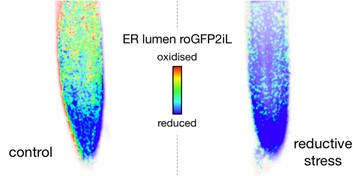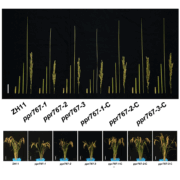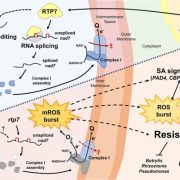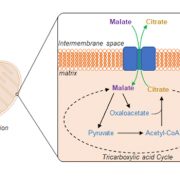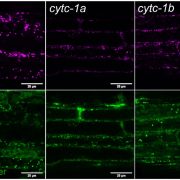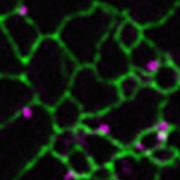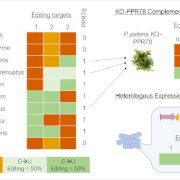Intracellular neighborhood watch – mitochondria help the endoplasmic reticulum to cope with reductive stress
By Philippe Fuchs, Markus Schwarzländer
Background: A strict division into specialized compartments, such as the cytosol, the chloroplasts, the mitochondria or the vacuole, is a principle that underpins the versatility of plant cells. For the different compartments to work in concert, they must each maintain their characteristic environment which needs to be defended against deviations. While the cytosol and the mitochondrial matrix require the thiol groups of their proteins and metabolites to be reduced, oxidative folding of secreted proteins in the endoplasmic reticulum (ER) requires conditions that favour oxidation to generate disulfide bridges. As a consequence, the ER is particularly susceptible deviations towards reduction by intake of thiols. To combat reductive stress, the ER requires robust response mechanisms.
Question: We made the serendipitous observation that Arabidopsis thaliana mutants with defects in their mitochondrial respiratory machinery were hypersensitive to reductive ER stress. We hence asked the question if and how mitochondrial respiration may support ER redox homeostasis.
Finding: Reductive ER stress can be induced by the model thiol reductant dithiothreitol (DTT). DTT impairs root growth in Arabidopsis seedlings and triggers an emergency program called the Unfolded Protein Response. We found that the ER stress responses were more severe when mechanisms that allow flexible tuning of respiration in the mitochondria were impaired, indicating that the oxidation capacity of the mitochondrial electron transport chain can support ER function. To understand the underlying mechanisms, we assessed the subcellular redox dynamics of glutathione and the NAD pool in living seedlings using fluorescent protein biosensors. We found that thiol-mediated reductive stress can affect NAD redox metabolism and that mitochondria can act as sink for the excess reductant. The data pinpoint a new role for the mitochondria in safeguarding the ER.
Next steps: The metabolic mechanism that links mitochondrial respiration to thiol oxidation deserves further investigation. The role that the physical association between mitochondria and the ER in the cell plays may be of interest in that context. Further, it needs testing to what extent the model can be generalized to naturally-occurring conditions that induce ER stress, as well as to non-plant systems.
Philippe Fuchs, Finja Bohle, Sophie Lichtenauer, José Manuel Ugalde, Elias Feitosa Araujo, Berivan Mansuroglu, Cristina Ruberti, Stephan Wagner, Stefanie J. Müller-Schüssele, Andreas J. Meyer, Markus Schwarzländer. (2022). Reductive stress triggers ANAC017-mediated retrograde signaling to safeguard the endoplasmic reticulum by boosting mitochondrial respiratory capacity. Plant Cell. https://doi.org/10.1093/plcell/koac017


